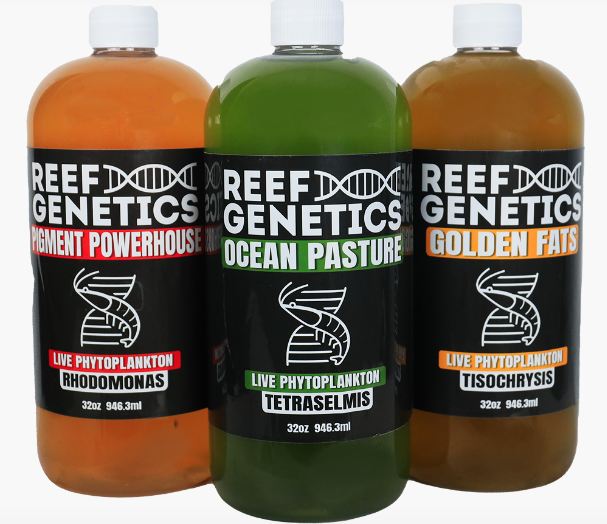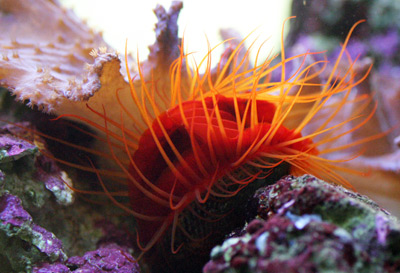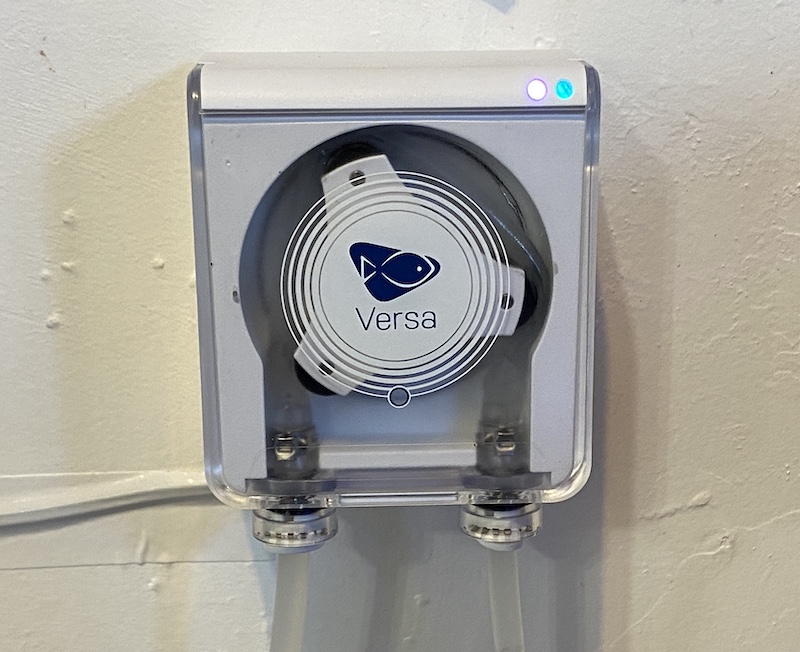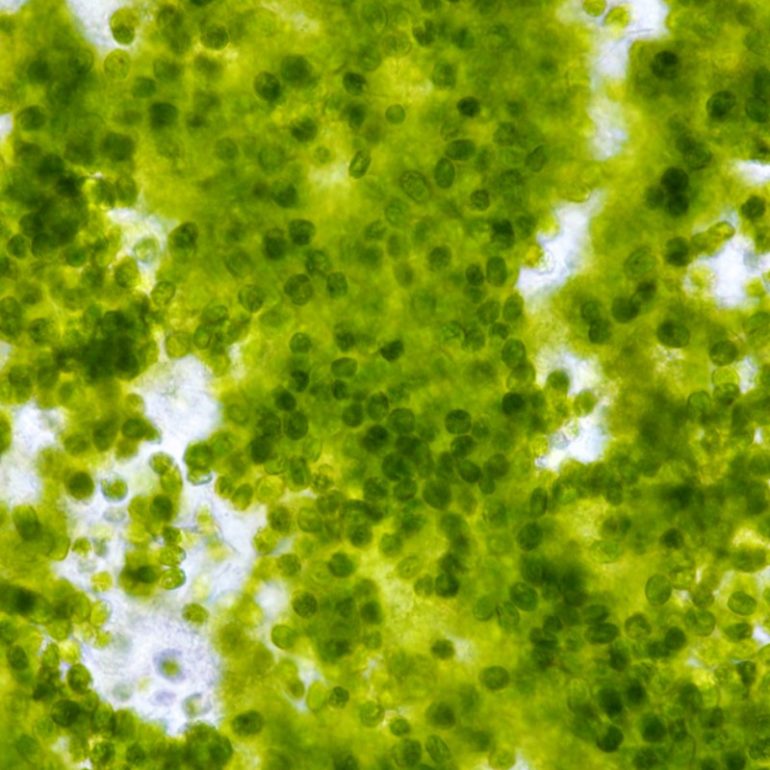We continue our deep dive into Phytoplankton with our resident phycologist, Taras Pleskun.
Should I feed phyto as well as amino acids?
As with all things, it depends on the general goals of the aquarium. Assuming the goal is to maintain growth in an SPS-dominated or mixed reef, both live microalgae and amino acids have a place in supporting the overall nutritional profile of a reef aquarium’s community.
The primary principle behind this reasoning is the diversification of food particle size. The mechanisms that allow corals, their symbionts, and other reef inhabitants to uptake free amino acids from the water column are completely different from the larger feeding structures required to capture and digest live microalgae cells.

What is very interesting, is the possible interaction live microalgae cells may have with concurrently fed amino acids. I think there could be some very interesting research avenues there. Another consideration, which separates the purposeful application of amino acids versus live phytoplankton is the rearing of various marine larvae. Red abalone larvae (??Haliotis rufescens), for instance, have ‘non-feeding’ early larval stages which are able to absorb free amino acids from the water column.
Farming such species would justify purposeful exploration of amino acids in isolation of live phytoplankton. Oyster larvae in contrast, have larvae which are voracious feeders of live phytoplankton. Live phytoplankton cells become highly preferable based on the goals of the application.
Can I enrich my phyto?
Yes, you can! Often we talk about using live phytoplankton to enrich other live feeds such as rotifers, artemia, and copepods with nutrition. But what needs to always be considered is the state of the algae fed to the aquarium, larvae, live feed culture, etc.
For the most part, algae by design enriches itself when cultivated under favorable conditions. The species and strain of algae is selected based on its capacity to manufacture beneficial compounds, but it is the decisions of the cultivator which dictate whether that algae will multiply and whether it will produce large amounts of a particular compound. Studying the correlation between various environmental and ecological factors was the subject of my research during my time studying at the University of Florida.
Beyond the realm of aquariums, mastering the large-scale manufacturing of desired compounds via algae is the future of a great many industries. Some relationships can be generalized briefly here: Firstly, blue light is largely associated with the production of lipids. This has many exceptions and nuances but explains why many marine algae (including T-ISO and Symbiodinium) favor that particular spectrum.

Red light favors more carbohydrate growth…generally associated with green microalgae. Higher salinities are associated with a generally higher capacity to store lipids. Pretty much across the board, nutrient starvation triggers increased lipid production of some sort (as the cells are preparing long-term energy reserves). A similar effect can be harnessed through observing growth phases…as older, more concentrated cultures begin to achieve higher lipid:biomass ratios, while at the same time, decreasing reproduction and short-term (carbohydrate) energy production.
Through such generalities, algae can be enriched by choosing the light spectrum/intensity as well as salinity to favor the production of fats. A conscientious home aquarist can also choose to harvest the culture well into the stationary growth phase (3+ million cells/ml) to ensure that the harvested cells are mature and have stored ample concentrations of fat.
In addition, various algae species can enrich each other when fed concurrently. This is because various algae species have incomplete nutritional profiles. One may produce golden fats, but be deficient in very important sterols and vice versa… Combining two or more algae species is definitely a means of enhancing the nutritional profile of each fed species. Feeding live microalgae cells with various frozen, formulated, and live feeds, as well as probiotics, is a great way of diversifying particle size when feeding a reef aquarium.
Can I auto-dose phyto with a peristaltic pump?
You can. But keep your lines and dosing pump methodically clean. Rotting algae in the line can and will breed horrid things. It would also be highly advised that the algae cells be refrigerated and the dosing be finished within the week. It is very difficult to grow sensitive phytoplankton species, such as Tisochrysis and Rhodomonas, under conditions where they can (and will) be easily contaminated.
Likewise, non-actively growing cells of such species hemorrhage nutritional content when kept at reef temperatures for prolonged periods. Thus, dosing from a refrigeration unit/cooler would be best if possible. Potentially green phytoplankton species, such as Tetraselmis chui, could be grown if the dosing lines and pump were to remain uncontaminated. This is not something I have done but may try one day.

There may be a specific benefit to dosing phytoplankton versus direct feeding. This is because such setups allow for multiple, low-concentration feedings which may greatly increase the efficiency with which the phytoplankton is uptaken into the reef aquarium system. If the dosing head is by a particular clam or coral, then the increased feedings benefit that specific individual and zone.
Filter-feeding organisms are designed to graze throughout the day, benefiting directly from phytoplankton dosing regimes. Before Top Shelf Aquatics, I worked at various oyster hatcheries in CT. Feeding small oysters a small drip of microalgae around the clock is far better for growth than dumping in a bucket once a day.
Should I feed phyto at night or in the day?
Another fascinating question – dictated by the specific goals of the aquarium. Phytoplankton may be purposefully fed during the day as a means of triggering a feeding response from something like an NPS coral. Many NPS species exhibit a feeding response at night, yet must receive purposeful feedings in captivity.
Feedings to other filter-feeding species like Tridacnid clams, electric scallops, and thorny oysters would likely be successful during day or night as such species are highly efficient at actively acquiring algae cells. Where I think night feedings may offer special benefits is to a photosynthetic SPS or mixed reef.
Many photosynthetic coral species exhibit natural feeding behavior at night…but night is also when hordes of copepods, worms, opossum shrimp, snail larvae, and other microfauna emerge from the rockwork and substrate. It is this microfauna that will explode when supplied with a sudden burst of phytoplankton. Many of this enriched population of small critters will find their way into the mouths of corals, mandarins, and anthias alike. It is in the context of stimulating an enriched zooplankton bloom that I most recommend feeding live microalgae at night.




